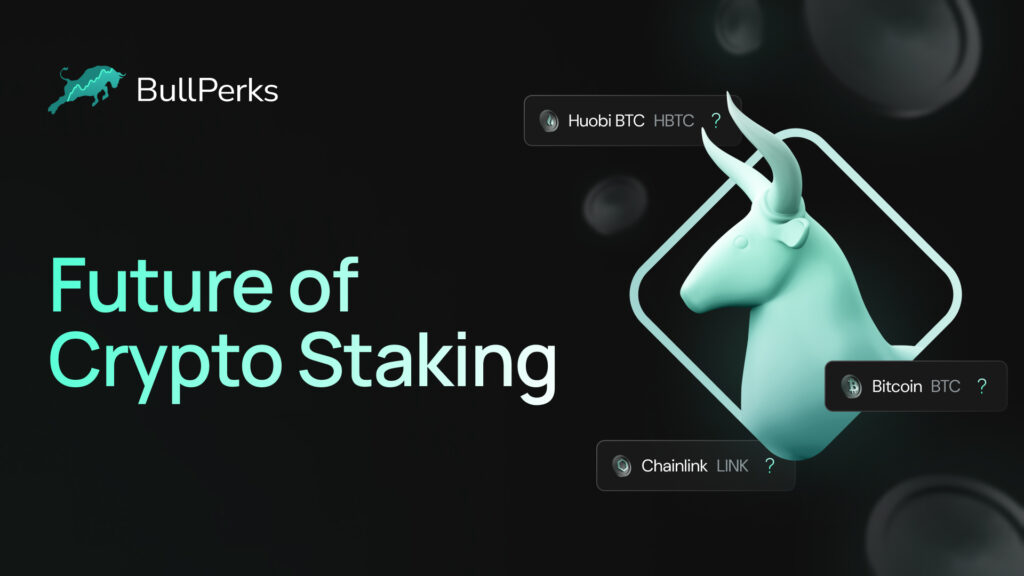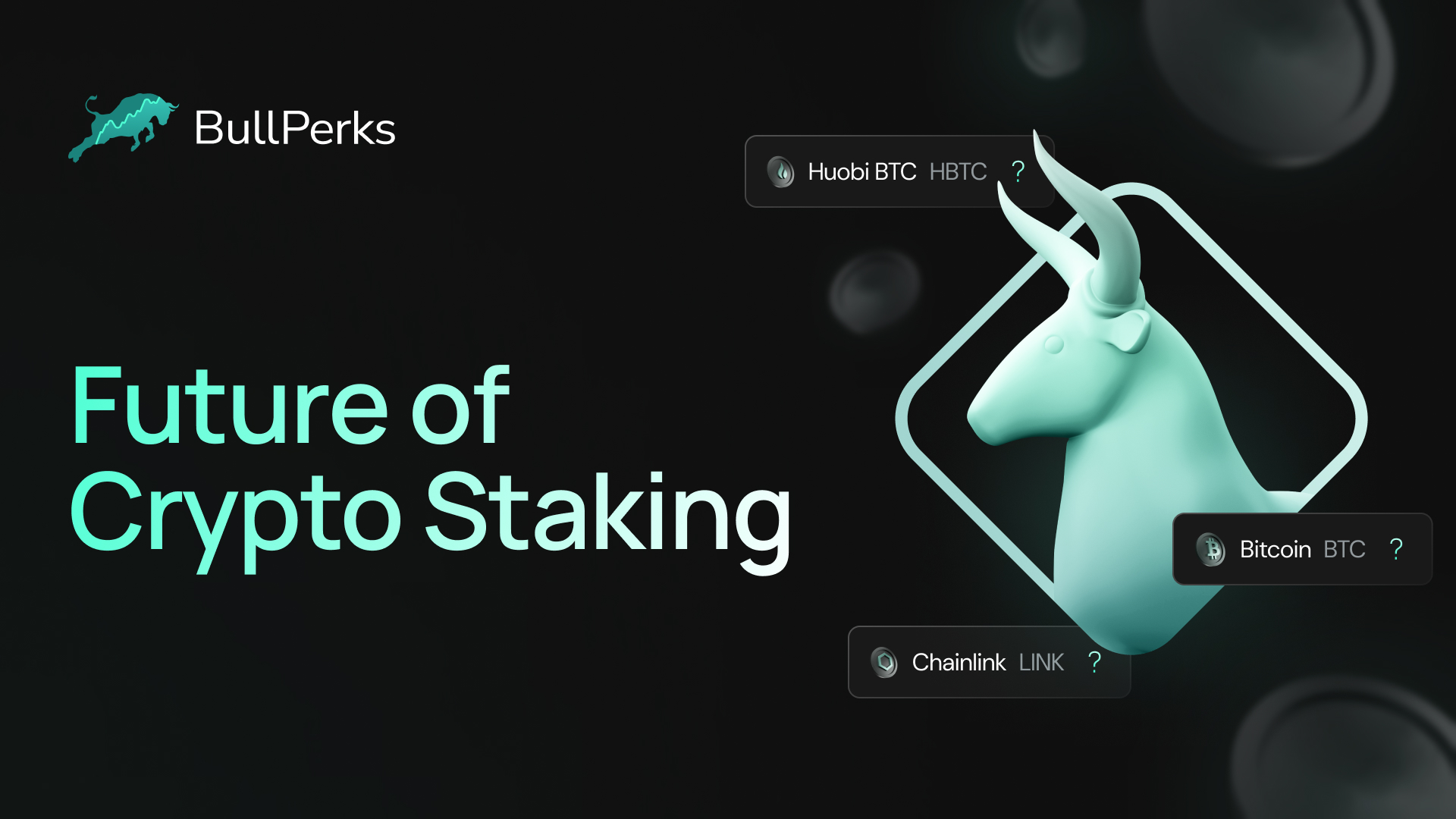
In the ever-evolving landscape of blockchain technology, crypto staking and staking services have emerged as a pivotal element, reshaping the dynamics of decentralized finance (DeFi) and bolstering the security of various blockchain networks. As we delve into the future of crypto staking, it is essential to understand its current state and the role it plays in the broader blockchain ecosystem.










The Promising Nature of Crypto Staking

One of the distinctive features of crypto staking service is its energy-efficient consensus mechanism. In contrast to the resource-intensive proof-of-work (PoW) algorithm employed by many cryptocurrencies, staking leverages proof-of-stake (PoS) or other consensus mechanisms that do not require miners to solve complex mathematical puzzles. This fundamental shift reduces the environmental footprint associated with blockchain transactions.
By design, staking involves participants, known as validators, locking up a certain amount of cryptocurrency as collateral to validate and secure transactions. This method eliminates the need for energy-intensive mining processes, making staking a more sustainable and eco-friendly alternative. As the global focus on environmental sustainability intensifies, the energy efficiency of staking positions it as a responsible choice within the blockchain ecosystem.
Beyond its environmental benefits, crypto staking plays a pivotal role in fortifying the security and decentralization of blockchain networks. Validators in staking protocols are economically incentivized to act honestly and follow the rules. In the event of malicious behavior, validators risk losing their staked assets, providing a strong economic deterrent against any attempts to compromise the network.
The decentralized nature of staking, where multiple participants contribute to the consensus process, fosters resilience against attacks. This decentralization is a stark departure from centralized financial systems that are vulnerable to single points of failure. By distributing the validation process among a network of participants, staking enhances security and promotes a trustless environment, aligning with the core principles of blockchain technology.
ETH Staking: A Year of Growth and Transformation

In 2023, the staking of Ethereum witnessed unprecedented growth, marking a transformative year for this new PoS system. Despite regulatory uncertainties casting shadows over the crypto landscape, staking Ethereum emerged as a resilient force, drawing participants including investor funds and traditional investors eager to contribute to the infrastructure security and scalability through the Ethereum network 2.0 upgrade.
The Ethereum 2.0 upgrade, a beacon of innovation in the tarnished staking space, introduced a shift from the energy-intensive proof-of-work (PoW) to the more sustainable proof-of-stake system. This upgrade not only aligns with the environmental consciousness of the crypto community but also positions Ethereum as a frontrunner in adopting energy-efficient solutions.
Participants in staking, commonly referred to as validators (they also validate transactions), played a crucial role in this transformative journey. By locking up their Ether as collateral at the established ETH staking rate, validators actively engaged in securing the network, validating transactions, and earning rewards in return.
This collaborative effort, amid regulatory uncertainties, showcased the resilience of the Ethereum community and its commitment to advancing the capabilities of blockchain technology.
The growth of staking service providers in 2023 was not solely driven by technological advancements; it was fueled by a community-driven ethos and a shared vision for the future of decentralized finance and liquid staking.
Ethereum, with its extensive developer community and robust ecosystem for staking assets, became a hub for innovation within the DeFi space, a favorite solution of the majority of DeFi liquid staking providers.
Staked assets served as the bedrock for various decentralized applications (DApps) and smart contracts, creating a dynamic and interconnected financial landscape.
Concerns and solutions

While the growth of staking is undeniably promising, challenges persist on the horizon. Concerns, such as the strain on the peer-to-peer network and regulatory uncertainties, demand careful consideration.
The strain on the network, a natural consequence of increased participation, necessitates scalable solutions to maintain efficiency and prevent congestion - the main challenges that inhibit institutional investors from entering the space to the full extent.
Regulatory uncertainties, an ever-present factor in the crypto sphere, pose challenges to the widespread adoption of staking protocols.
So, a completely different diligence process including proper lending due diligence is needed to maintain the network integrity and its compliance with the staking regulation offered by the Securities and Exchange Commission to keep liquidt staking providers and other service providers accountable for their clients.
Transparently reported staking returns are another challenge that shall be handled when we speak about eliminating questionable compliance practices.
Only when all liquid staking providers understand infrastructure security and risks involved in the same way as regulators, they will be able to introduce compliant practices to conduct diligence and manage properly customer funds thus speeding up domestic capital formation and developing new ways of methodic capital management.
Bright future despite regulatory uncertainty

In the face of regulatory uncertainty, the future of Ethereum staking remains bright. Ethereum's transition to a proof-of-stake consensus mechanism is one of the major technical upgrades that positions Ethereum as a sustainable and scalable blockchain, contributing to the broader narrative of responsible blockchain innovation. The role of Ethereum staking in maintaining and securing the Ethereum blockchain is pivotal, irrespective of the regulatory landscape.
The bright future of ETH staking lies in its resilience and adaptability. While regulatory uncertainties may cast shadows over the crypto landscape, Ethereum's commitment to continuous improvement and innovation positions it to navigate these challenges with confidence.
The Ethereum community, renowned for its collaborative spirit and commitment to decentralization, actively engages with regulators to address concerns and contribute to the establishment of clear regulatory guidelines.
Do Crypto Staking Services Have Long-Term Viability?
The question of the long-term viability of crypto staking is a critical one. The answer hinges on the industry's ability to adapt to evolving challenges.
Technological advancements, ongoing research, and community-driven initiatives will play a crucial role in ensuring the sustained viability of staking protocols.
Other factors that impact the staking sustainability in the long term are the possibility of earning staking rewards from the staked ETH and other coins, the composite ETH staking rate, the amount of transaction fees that can be received for ETH staked, staking lockups for an underlying asset, and other details.
As blockchain technology continues to mature, the outlook for crypto staking appears optimistic, with the potential for ongoing innovation and improvements.
Concerns and Solutions
However, the future of staking is not without its challenges. Concerns such as strain on the peer-to-peer network and regulatory uncertainties loom large. The strain on the network, if left unaddressed, could compromise the efficiency and scalability of staking protocols.
Regulatory uncertainties add an additional layer of complexity, potentially deterring new participants and casting shadows on the legal framework surrounding staking thus limiting the private fund exposure to staking.
To counter these challenges, proposed modifications to staking protocols are being explored. Additionally, institutional interest in crypto staking is on the rise, potentially providing stability and legitimacy to the ecosystem without compromising the network integrity. Striking a balance between innovation and compliance is crucial for the sustained growth of crypto staking.
Institutional interest as a stabilizing factor for staked assets

A notable trend contributing to the bright future of ETH staking is the increasing interest from institutional players. Institutions bring not only significant financial resources but also a level of legitimacy to the staking ecosystem without compromising network integrity.
In conclusion, despite regulatory uncertainty, the future of ETH staking remains promising. Its integral role in securing the Ethereum blockchain positions ETH staking as a resilient force within the broader crypto landscape.
As the Ethereum network continues to evolve and adapt, ETH staking stands as a testament to the industry's commitment to innovation, security, and decentralization, promising a future where Ethereum remains a cornerstone of the decentralized financial ecosystem.
Crypto Staking vs. Banking Deposit

The landscape of wealth management is undergoing a transformative shift, driven by technological advancements and the emergence of innovative financial instruments.
In this dynamic environment, the comparison between crypto staking and traditional banking deposits becomes a critical exploration of the evolving preferences and opportunities for individuals seeking to grow and manage their wealth.
Yield potential: staking rewards vs interest payments
Crypto Staking:
- Crypto staking offers the potential for higher yields compared to traditional banking deposits. Participants, known as stakers, receive staking rewards for actively participating in the consensus process of a blockchain.
- Staking returns are often influenced by factors such as network demand, the need to maintain internet uptime, protocol design, and the overall growth of the cryptocurrency market. The dynamic nature of liquid staking rewards can result in more significant returns compared to traditional interest rates.
Banking Deposit:
- Traditional banking deposits, while providing a sense of security, typically offer lower interest rates.
- Banks usually offer predetermined interest rates, and the returns are subject to the prevailing economic conditions and central bank policies.
Active participation vs passive investment
Crypto Staking:
- Liquid staking involves active participation in the blockchain network by contributing staked coins as collateral. Stakers validate transactions and ensure network security.
- Participants have a vested interest in the success and security of the blockchain, aligning with the decentralized ethos of the crypto community.
Banking Deposit:
- Banking deposits are generally considered passive investments. Depositors entrust their funds to the bank, with the expectation of fixed returns without active involvement in the bank's operations.
- The relationship is more transactional, with depositors relying on the reputation of the banking institution.
Accessibility and inclusivity
Crypto Staking:
- Crypto staking is accessible to anyone with the requisite cryptocurrency to participate.
- Staking platforms are increasingly user-friendly, providing a seamless experience for participants, regardless of their geographical location.
Banking Deposit:
- Traditional banking deposits require individuals to have a bank account within the jurisdiction of the banking institution.
- The traditional banking system may exclude certain demographics, making it less inclusive.
Risk and security
Crypto Staking:
- Liquid staking involves some level of risk, mainly related to market volatility and the potential for protocol vulnerabilities. However, participants can diversify their staking portfolios to mitigate risks.
- The security of each staking providers offering is reinforced by the decentralized nature of blockchain networks, where no single entity has control over the entire network.
Banking Deposit:
- Traditional banking deposits are considered lower risk, particularly in stable economic environments. However, they are not immune to risks such as bank insolvency, economic downturns, or inflation eroding the real value of returns.
- Government-backed deposit insurance schemes in many countries mitigate some risks associated with traditional banking deposits.
Conclusion
In the ongoing debate of crypto staking vs banking deposits, the choice ultimately depends on individual preferences, risk tolerance, and the desired level of engagement.
While banking deposits offer stability, crypto staking provides an avenue for active participation, potentially higher returns, and broader financial inclusion. As the landscape continues to evolve, individuals are presented with a diverse set of options to tailor their wealth management strategies in alignment with the digital age.
Would you like to start investing in the most promising crypto projects? Learn how to invest with BullPerks, the fairest and most community-oriented decentralized VC and multichain launchpad!
Disclaimer. This material should not be construed as a basis for making investment decisions or as a recommendation to participate in investment transactions. Trading digital assets may involve significant risks and can result in the loss of invested capital. Therefore, you must ensure that you fully understand the risk involved, consider your level of experience, investment objectives, and seek independent financial advice if necessary.












